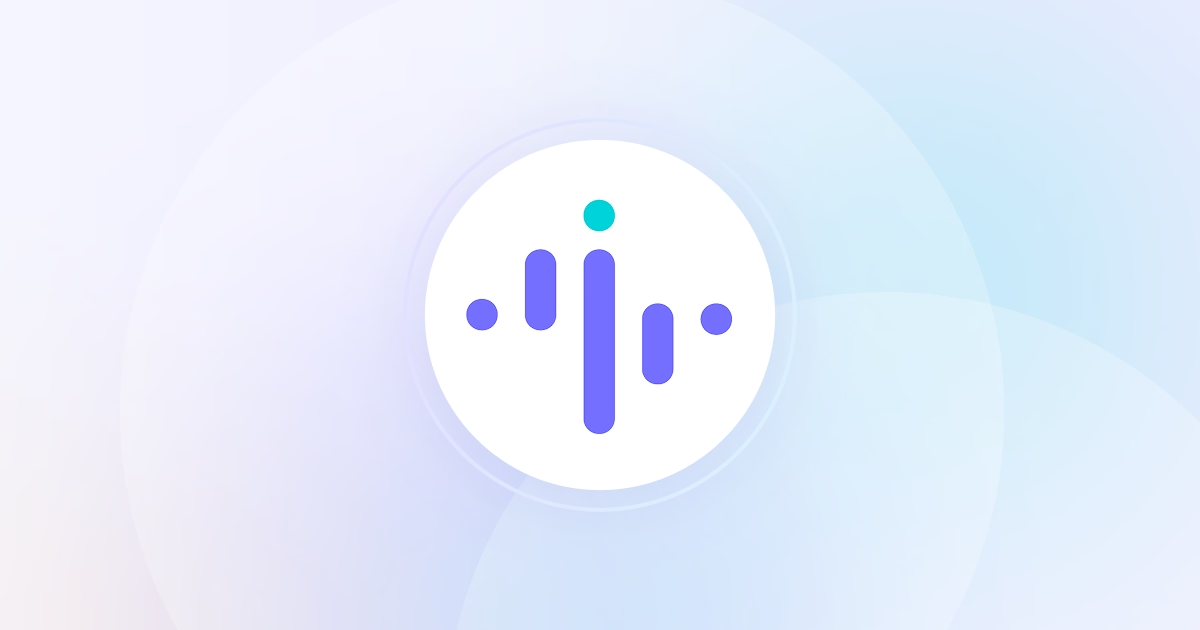The Hidden Costs of Call Center Attrition—and How to Solve Them

.png)

In this article, we’re going to discuss:
- How the hidden costs of attrition can quietly drain your budget.
- Proven strategies to keep agents engaged, from balancing workloads to offering growth opportunities.
- The role call center quality monitoring software plays in preventing burnout and improving retention.
- How QA tools with workforce management features offer a complete view of agent activity to help you act before problems escalate.
Call center attrition is a costly problem that quietly eats into your budget and disrupts operations. From recruiting and training new agents to dealing with productivity gaps, the financial and operational toll quickly adds up.
Worse yet, high attrition rates impact customer satisfaction, damage your brand reputation, and put even more pressure on remaining agents, creating a cycle that’s hard to break.
This article dives into the hidden costs of attrition. It lays out strategies and the tools needed to reduce turnover, helping you save money, improve agent retention, and maintain top-tier service quality.
The Hidden Costs of Call Center Attrition
The costs of call center attrition go beyond just inconvenience, and the hidden costs can be staggering.
What are the hidden financial costs of call center attrition?
Recruitment & Training Costs
Recruitment and training in call centers are expensive and resource-intensive. Each hire involves costs for job ads, recruiter hours, and often hiring bonuses.
Once onboarded, new agents undergo weeks of training, which requires materials, tech, and dedicated trainer time. During this period, they contribute minimally to productivity, often needing close supervision and making more errors.
For a 100-agent call center with 30% attrition, replacing 30 agents annually at $5,000 per hire can cost $150,000, excluding productivity losses.
Productivity Loss
Departing agents take valuable expertise with them, creating gaps in efficiency. Their absence increases workloads for the remaining staff, leading to higher stress, more mistakes, and burnout. Over time, this reduced productivity impacts service quality and increases the likelihood of further attrition, perpetuating a costly cycle.
Overtime & Temporary Staffing
Attrition forces call centers to rely on overtime pay to cover shifts, inflating payroll costs and contributing to agent fatigue. To fill gaps, temporary workers or contractors are often brought in, but their lack of experience and training leads to inconsistent service quality. Higher costs and lower performance directly impact customer satisfaction and operational efficiency.
Customer Churn & Acquisition Costs
How does high attrition affect customer satisfaction (CSAT)? Customers become frustrated and lose trust when overwhelmed or inexperienced agents deliver poor service. This often leads to churn, forcing businesses to spend more on acquiring new customers. The cost of replacing lost customers is significantly higher than retaining existing ones, making attrition a direct threat to revenue and long-term customer loyalty.
Operational Disruptions
High turnover disrupts workflows and slows processes, decreasing efficiency. Managers are forced to spend time recruiting and training replacements instead of focusing on strategic goals or team development. These disruptions compound over time, making it harder for call centers to maintain consistent service quality and meet performance targets.
What are the main causes of call center attrition?
Call center attrition often results from burnout, insufficient training, and limited career growth, all exacerbated by frustrating workflows and reactive management. Overworked agents without proper support feel undervalued and overwhelmed, while inadequate training leaves new hires struggling to adapt.
When advancement opportunities are scarce, motivation fades, and disjointed tools make daily tasks unnecessarily stressful. A rigid, unsupportive environment compounds these issues, and many agents have already disengaged by the time problems are addressed.
What strategies can effectively reduce call center turnover?
Luckily, proactive solutions that prioritize support, growth, and streamlined processes can help you break this cycle.
How? By relying on call center quality management software that combines workforce management (WFM) with QA. These tools, like Insightful, help call centers improve efficiency by tracking agent activities, balancing workloads, and monitoring service quality.
Unlike traditional tools, they provide a complete view of both on-call and off-call activities, enabling proactive management and optimized performance.
Here’s how:
1. Enhancing Workforce Visibility
When you have a clear view of what agents are doing during and between calls, it’s easier to fix problems before they escalate. If someone is bogged down with too much post-call work or repetitive tasks, you can rebalance their workload to keep things fair and manageable.
This visibility also helps you identify top performers and offer targeted coaching to those who need extra support. When agents feel seen and supported, they’re more engaged, productive, and likely to stay.
Call center quality assurance software makes this possible by offering features like real-time activity tracking, workload monitoring, and task distribution. It highlights where workloads are piling up and where inefficiencies slow your team down, so you can make quick adjustments to schedules or tasks.
With these insights, you can create a balanced, efficient team and an environment where agents are motivated to succeed.
2. Optimizing Training & Onboarding
Confident agents are less likely to quit out of frustration, and when you offer ongoing, personalized learning opportunities, they stay motivated to grow and perform at their best. This keeps your team engaged, service quality high, and turnover low.
Workforce management and QA tools like Insightful make training easier by tracking how new hires are progressing and pinpointing where they might need extra help.
These tools show how agents handle tasks both during and between calls, ensuring no important skills get missed. With real-time performance insights, you can tweak training plans as needed and give agents the support they need to succeed.
The result is a more confident, capable team that sticks around and gets the job done.
3. Balancing Workloads
When agents are overworked, burnout sets in quickly, leading to higher turnover and more stress for the rest of your team. Balancing workloads helps reduce this strain.
Using real-time data to match staffing levels with call volumes—while accounting for shrinkage—ensures everyone has a manageable workload, even during busy periods.
Contact center quality management software makes balancing workloads much easier by using data to predict call volumes and spot workload imbalances. These tools help you create schedules that align staffing with demand and identify agents who might be taking on too much.
Real-time tracking means you can adjust tasks or schedules on the fly, keeping everything fair and manageable. With balanced workloads, agents can focus on providing quality service instead of rushing to keep up.
This makes your team feel supported, improves retention, and lowers the need for expensive overtime or temporary staffing.
4. Streamlining Tools & Processes
Disjointed systems and inefficient workflows make agents’ jobs unnecessarily complicated. When agents spend too much time navigating fragmented systems or dealing with redundant steps, their productivity slows, and turnover risks increase.
Streamlining tools and processes creates a smoother work environment, allowing agents to focus on helping customers rather than struggling with inefficiencies.
Contact center quality assurance software can pinpoint where productivity drops by tracking how agents interact with their systems. These tools monitor metrics like time spent on tasks, tool usage patterns, and idle time, revealing bottlenecks or systems that may be slowing agents down.
By analyzing this data, you can identify areas for improvement, such as integrating systems, simplifying workflows, or providing targeted training. Simplified processes improve job satisfaction and reduce productivity losses and the costs associated with operational disruptions.
5. Investing in Career Growth
When agents don’t see opportunities to advance, they’re more likely to leave for roles that offer growth. Providing clear career paths and recognizing top performers with meaningful rewards is key to keeping agents engaged and motivated.
Growth opportunities strengthen loyalty and reduce turnover, while experienced agents who stay deliver better service. Investing in development also improves team morale, creating a work environment where agents feel valued.
Call center quality monitoring tools track productivity, engagement, and performance metrics, giving you the data needed to identify high-potential agents and areas for improvement. These insights help you create tailored growth plans and recognize achievements, fostering a culture of support and encouragement for agents to thrive.
6. Leveraging Data for Proactive Management
Reactive management addresses problems only after they’ve caused damage, but using data to spot early signs of stress or disengagement lets you act before things escalate.
When you adjust workloads or provide support in real time, you show agents that their well-being matters. This proactive approach reduces burnout, prevents resignations, and saves the costs of constantly replacing and retraining agents. It also keeps your team consistent and capable of delivering high-quality service, improving customer satisfaction and cutting down on churn.
Workforce management and QA tools like Insightful make proactive management possible by tracking agent performance and engagement data. They highlight patterns like increasing idle time or drops in productivity that signal potential issues. With these insights, you can step in early with solutions like coaching, workload rebalancing, or additional support, ensuring your team stays engaged and productive.
Unlike traditional tools, Insightful tracks both on-call and off-call activities, giving you the full picture to take action before problems impact your team or your bottom line.
Don’t let turnover drag your business down—sign up for a 7-day free trial of Insightful today!

.jpg)
.jpg)
